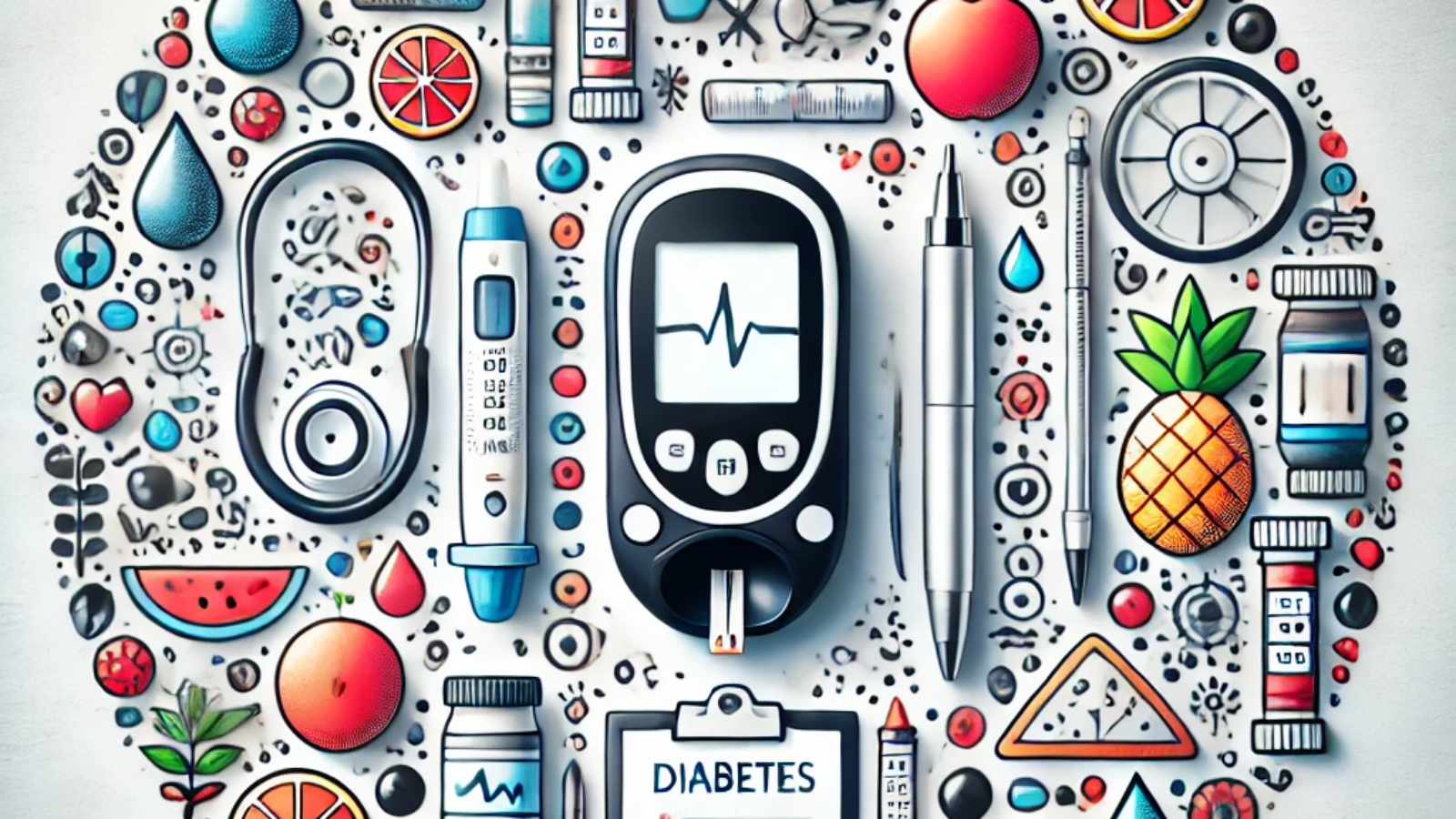What is diabetes?
Diabetes is one of the most common chronic diseases that occurs due to problems with the body’s production or use of the hormone insulin. Insulin is a hormone produced by the pancreas that helps the body’s cells convert glucose (sugar) into energy. When this process is disrupted, blood sugar levels rise, which is called diabetes.
Types of diabetes
- Type 1 diabetes: This type of diabetes occurs when the body’s immune system attacks the insulin-producing cells, causing the production of insulin to stop completely. This type of diabetes is most common in children and adolescents.
- Type 2 diabetes: The most common type of diabetes, caused mainly by the body’s resistance to insulin or insufficient production of it. This type of diabetes occurs more often in people over 40, people who are overweight, or those with a family history of diabetes.
- Gestational diabetes: A type of diabetes that develops temporarily during pregnancy and usually resolves after delivery.
Symptoms of diabetes
Symptoms of diabetes may appear gradually or suddenly. These symptoms include:
- Excessive thirst
- Frequent urination
- Excessive fatigue
- Unexpected weight loss
- Blurred vision
- Wounds that heal slowly
Diabetes risk factors
Some risk factors for diabetes include:
- Type 1 diabetes: family history, genetic factors
- Type 2 diabetes: overweight, inactive lifestyle, family history, age over 40
- Gestational diabetes: advanced maternal age, obesity, family history of diabetes
Diabetes complications
If diabetes is not controlled, it can lead to serious complications, including:
- Cardiovascular diseases
- Kidney damage (nephropathy)
- Damage to the eyes (retinopathy)
- Nerve problems (neuropathy)
- Skin problems
Diabetes diagnosis
Diabetes is usually diagnosed with a blood test. Some common tests include:
- Fasting blood sugar test: To measure glucose levels after 8 hours of fasting.
- HbA1c test: To assess the average blood sugar level over the past three months.
- Glucose tolerance test: To check how the body responds to sugar consumption.
Diabetes management methods
1. Proper diet
A healthy, balanced diet can help control blood sugar levels. Important tips include:
- Consuming vegetables, fruits, and whole grains
- Limiting sugar and saturated fat intake
- Respecting meal measurements
2. Regular physical activity
Regular exercise, such as walking, running, or swimming, can help control blood sugar. Physical activity increases the sensitivity of cells to insulin.
3. Taking medications
Some people may need oral medications or insulin injections. Your doctor will determine the appropriate type and dosage.
4. Regular blood sugar monitoring
Constant monitoring of blood sugar levels helps prevent complications. Home blood sugar testing devices can be helpful in this regard.
5. Stress management
Stress can increase blood sugar levels. Practicing meditation, yoga, and deep breathing techniques can help reduce stress.
Prevention of type 2 diabetes
You can reduce your risk of developing type 2 diabetes by making lifestyle changes:
- Maintain a healthy weight: Losing excess weight can have a big impact on reducing risk.
- Physical activity: At least 150 minutes of exercise per week is recommended.
- Balanced diet: Consume foods that are low in calories and rich in fiber.
New treatments for diabetes
With the advancement of medical science, new treatments for diabetes have been introduced:
- Insulin pumps: These devices automatically inject insulin into the body.
- New oral medications: Medications that, in addition to controlling blood sugar, also help with weight loss.
- Cell therapy: Experimental methods to replace damaged insulin-producing cells.
Conclusion
Diabetes is a disease that requires permanent lifestyle changes, medication, and regular monitoring. Although it can be challenging, it is possible to live a healthy life with awareness and preventive measures. It is best to see a doctor if you experience symptoms or have risk factors and seek professional advice.



دیدگاه خود را به اشتراک بگذارید